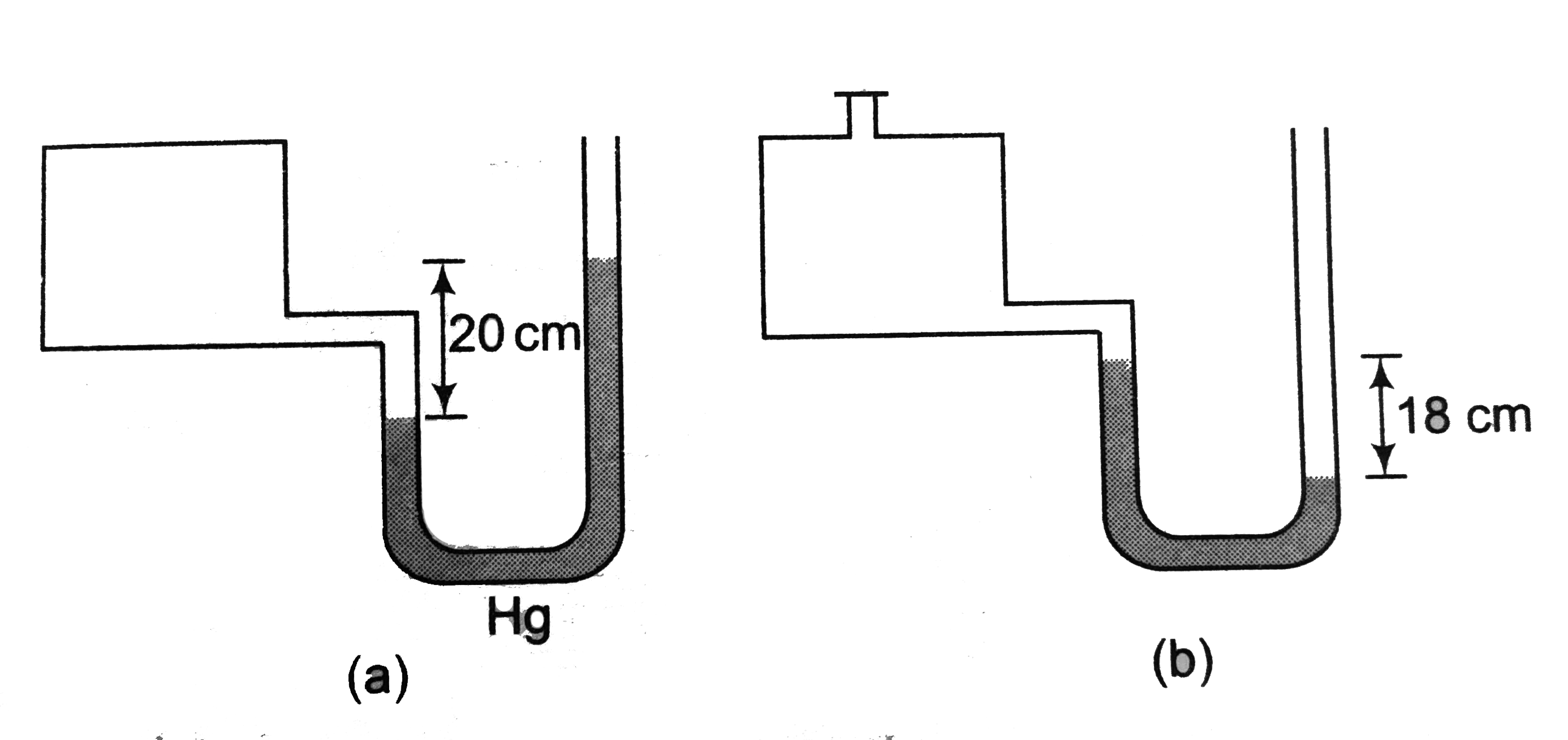A gas is filled into a bulb connected to an open limb manometer. The level of mercury in the open arm is 2.1 cm lower than that in the other arm of the manometer. The atmospheric pressure is 740 mm. What is the pressure of the gas?
As level in the open arm of the manometer is lower than that in the arm connected to the gas bulb, this means that atmospheric pressure is greater than pressure of the gas by difference of the two levels. Hence, pressure of gas = 740 – 21 = 719 mm.
Topper's Solved these Questions
- BOOK - VMC MODULES ENGLISHCHAPTER - STATES OF MATTEREXERCISE - LEVEL -0 ( Short Answer Type)8videos
STATES OF MATTER
- BOOK - VMC MODULES ENGLISHCHAPTER - STATES OF MATTEREXERCISE - LEVEL -0 (Short Answer Type-II)27videos
STATES OF MATTER
- BOOK - VMC MODULES ENGLISHCHAPTER - STATES OF MATTEREXERCISE - IMPECCABLE50videos
STATES OF MATTER
- BOOK - VMC MODULES ENGLISHCHAPTER - STOICHIOMETRY - IEXERCISE - JEE Advanced (Archive)31videos
STOICHIOMETRY - I
Similar Questions
The difference in the heights of mercury levels in an open end manometer connected to a gas chamber is found to be 175 mm. If the height of mercury level in the smaller limb is more as compared to that in the longer limb and the atmospheric pressure is 755 mm, what is the pressure of the gas ?
View SolutionA glass bulb is connected to an open-limb manometer. The level of mercury on both limbs was same. The bulb was heated to 57∘C. If the room temperature and atmospheric pressure are 27∘C and 750 mmHg, the difference of levels in the two limbs now will be
View SolutionThe manometer has a water column difference of 50 cm . If the atmospheric pressure is 105 Pa, find the pressure of the gas in the container .
View SolutionA manometer is connected to a gas containing bulb The open arm reads 43.7cm where as the arm connected to the bulb reads 15.6cm If the barometric pressure is 743mm mercury What is the pressure of gas in bar ? .
View SolutionA manometer is connected to a gas containing bulb. The open arm reads 40.0cm where as the arm connected to the bulb reads 15.0cm. If barometric pressure is 74.0cmHg, then what is the pressure of gas in bar?
View SolutionThe difference in the heights of mercury columns in a closed end manometer connected to a gas container is found to be 15 cm. What is the pressure of the gas in terms of Pa ?
View SolutionThe arms of a U shaped tube are vertical. The arm on right side is closed and other arm is closed by light movable piston. There is mercury in the tube and initially the level of the mercury in the arms is the same. Above the mercury, there is an air column of height h in each arm, and initial pressure is the same as atmospheric pressure in both arms. Now pistion is slowly pushed down by a distance of h/2 (see figure)

Let x is the displacement of mercury level in one of the stem and P1 is pressure in left column of air after compression, P2 is pressure in right column of air after compression and P0 is atmospheric pressure thenView SolutionIn a constant volume gas thermometer, the pressure of the working gas is measured by the difference in the levels of mercury in the two arms of a U-tube connected to the gas at one end. When the bulb is placed at the room temperature 27.00C, the mercury column in the arm open to atmosphere stands 5.00cm above the level of mercury in the other arm. When the bulb is placed in a hot liquid, the difference of mercury levels becomes 45.0cm. Calculate the temperature of the liquid. (Atmospheric pressure =75.0cm of mercury).
View SolutionIn a constant volume gas thermometer, the pressure of the working gas is measured by the differenced in the levels of mercury in the two arms of a U-tube connected to the gas at one end. When the bulb is placed at the room temperature 27.00C, the mercury column in the arm open to atmosphere stands 5.00cm above the level of mercury in the other arm. When the bulb is placed in a hot liquid, the difference of mercury levels becomes 45..0Cm. Calculate the temperature of the liquid. (Atmospheric pressure =75.0cm of mercury).
View SolutionA manometer reads the pressure of a gas in a enclosure as shown in figure(a) When some of the gas is removed by a pump, the manometer reads as in (b). The liquid used in the manometers is mercury and the atmospheric pressure is 76cm of mercury.

(i) Give the absolute and gauge pressure of the gas in the enclosure for cases (a) and (b) in units of cm of mercury .
(ii) How would the level change in case (b) if 13.6cm of water are poured into the right limb of the manometer?View Solution

